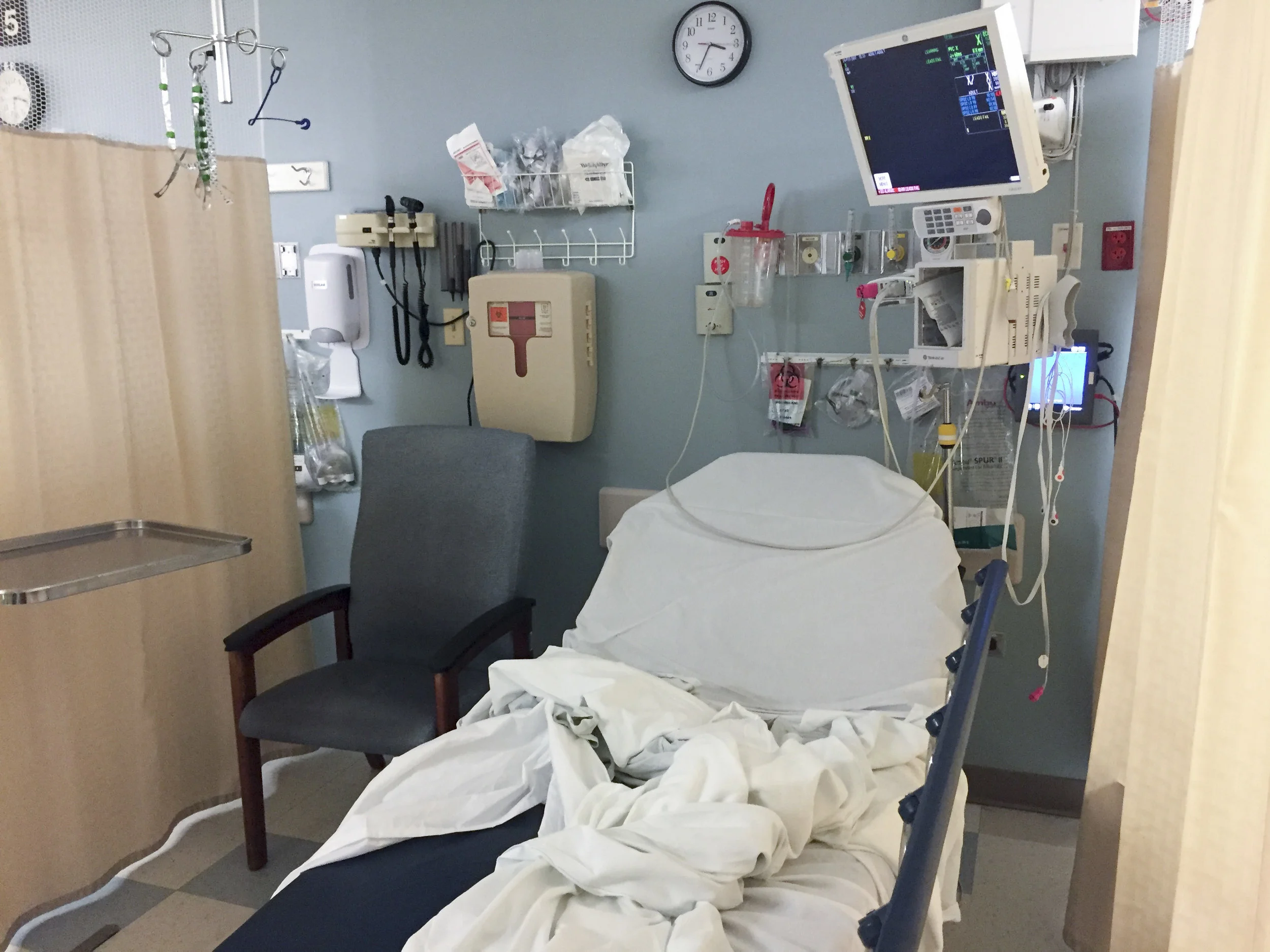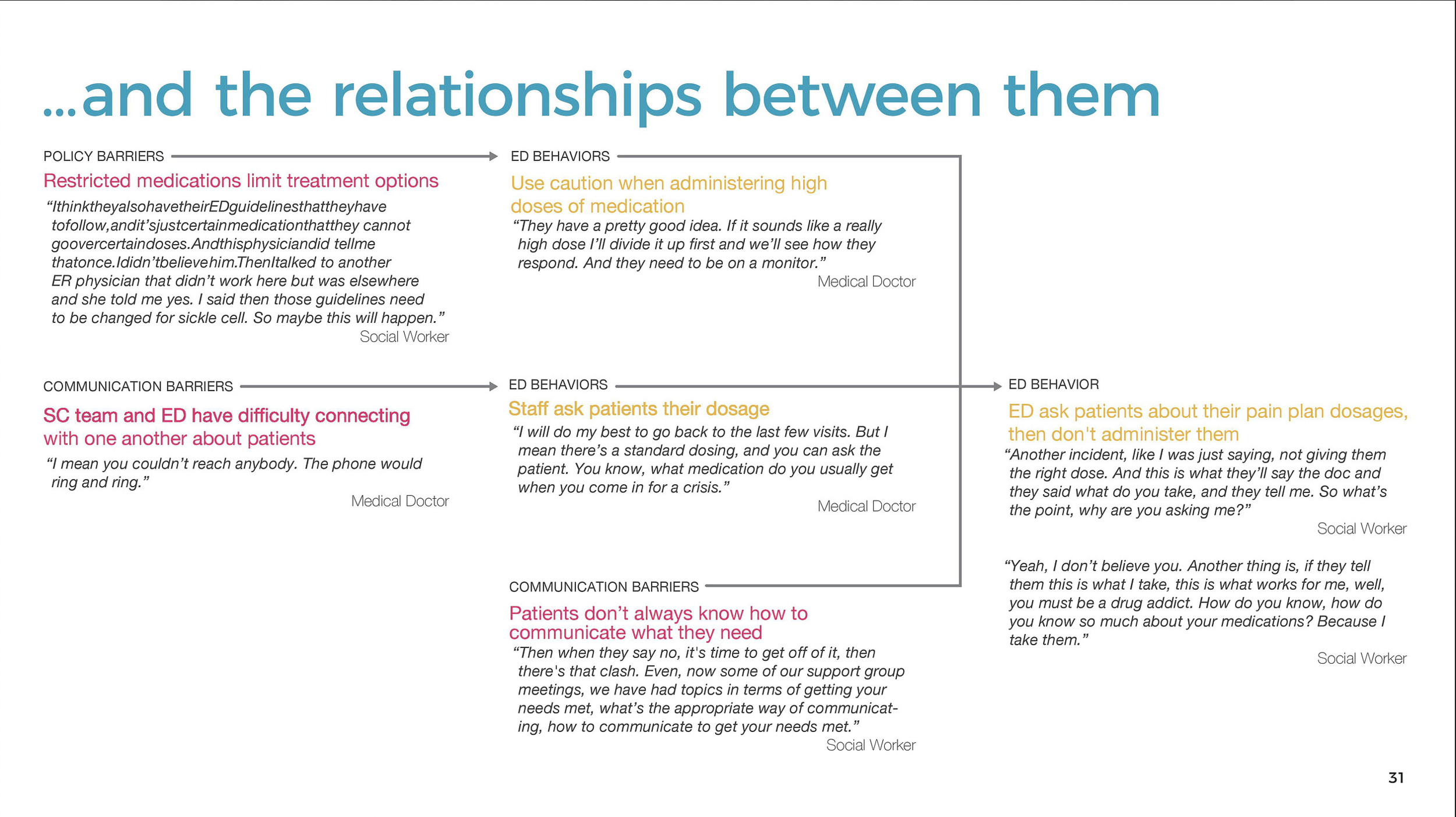Overview
Improving Sickle Cell Care in Adolescents and Adults in Chicago (ISAAC) is a multi-year NIH/NHLBI-funded grant intended to improve clinical care and patient outcomes of people with sickle cell disease by designing, testing, and implementing an integrated model of longitudinal and emergency care.
Many Chicago adolescents and adults with sickle cell disease (SCD) experience severe episodic and chronic pain, progressive organ damage, frequent hospitalizations and re-hospitalizations, fragmented care and alarmingly high mortality. Despite the heavy toll in human suffering and related disruption to daily life, relatively few resources are devoted to improving the lives of people with this condition.
Objective | Design a “pain passport” to help people with sickle cell communicate effectively with ER staff, so patients in crisis can get the intensive pain medication they need rather than labeled as drug-seekers.
Healthcare Design
Teammates
Sarah Braunstein
Aaron Cook
Shangyanyan Li
Advisor
Kim Erwin
Partnering Organization
UI Health | University of Illinois Chicago
Phase 1 Tools Assessment
Before immersing ourselves into the clinical setting our team conducted a thorough study to assess tools available to sickle cell disease patients and caregivers through a human-centered design lens. Using various frameworks we focused on three main criteria: usability, accessibility, and actionability for patients / caregivers managing a pain crisis.
The tools assessment along with clinical literature reviews began to frame our awareness of the disease, the complexity of care, and the start of composing a list of design requirements for the design of a “pain passport”.
Phase 2 Primary Research
We needed to make sense of how people’s interactions and mindsets influence sickle cell care in order to create a useful tool. Taking a holistic approach reviled the human perspective, which was missing during the tools assessment. Our team completed interviews with physicians, nurses, social workers, and community health workers sharing their sickle cell journeys while also providing feedback on digital tool apps. Additionally, we participated in direct observations in the Emergency Department, Sickle Cell Center, and a patient support group to build the case.
Phase 3 Analysis
Our team organized the data collected from interviews and observations using two methods: grounded theory and mapping barriers with facilitators. Building structure out of the large data set revealed patterns in behaviors, perceptions, and expectations within the patients care journey. The findings through this process became an additional validation and development to our design requirements.
Final Presentation The Complex Patient in a Complex System
After 12 weeks using the human-centered design approach we shared the complex story of a patient journey, the disconnect within the system, while conveying perceptions and behaviors of both patients and clinicians. Design was a new process to most ISAAC stakeholders involved in the NIH/NHLBI-funded grant work, with many questioning the resource allocation and value of the methodologies. Once presented with the findings there were many shifts in mindsets created by empathy. Empathy through the stories they heard aligned all stakeholders to the importance of design methods within healthcare delivery. Stakeholders were eager and energized to continue with the human-centered design work moving into the next phases of the project.





















